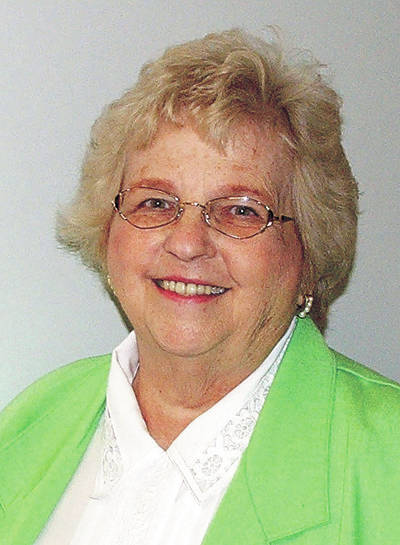
Nearly 90 years ago, W. A. Paxson, at that time a resident of Jamestown, related the story of Indian Joe — a Shawnee Indian and very likely the last of the original Shawnee who had lived at the village of Old Chillicothe.
Mr. Paxson spent his early years on his grandfather’s farm about two miles north of Oldtown. It was there that he became acquainted with the man who was simply known as “Indian Joe”.
Each winter, Joe would appear at the farm, ready to do whatever chores might be needed in order to have shelter and food. During the summer months, he would disappear from the local scene. No one knew where he went; he simply left when the warmer weather arrived.
Joe enjoyed sharing bits of information with the young boy. He told about ground hogs and other wildlife which inhabited the area.
He also told the little boy about the “Great Spirit,” the first man who ever lived and that he lived in a mansion way up in the sky and that the sun and moon and stars were his family. The moon was his wife and she watched over the star children while he slept at night. Joe went on to say the Great Spirit never died, for there was no one big enough to kill him, and he would live forever. He was awfully busy making things for the people on the earth, as his children, and teaching them how to use them. Joe explained that he taught the Indians how to make the bows and arrows and how to use them.
Joe was good at tanning leather and making baskets which he often gave to the neighboring ladies. He also made oak splint baskets for the farmers, for which he was paid.
Joe told of how he had been kicked in the leg by a horse, causing the leg to break. Mr. Paxson’s grandmother had done the best she could to set it for him but it was never quite the same. He walked with a cane for many years, one leg shorter than the other.
He asked Mr. Paxson’s grandfather if he could stay on the farm in the winter. He would arrive at the farm in the fall, but would not accept the hospitality of a bed in the house. Instead he slept, wrapped in a buffalo robe, in a small storage room on the porch. If the weather was extremely cold, he would come into the kitchen to sleep on the floor near the fireplace, wrapped in his blankets.
He seldom ate at the table, but grandma would provide a plate of food which he would eat in “his” room. He always ate with his fingers, using neither fork nor knife. If it was very cold, he might sit beside the fireplace to eat.
When it was time to plant corn, Joe took his leave. Grandfather would provide bacon, coffee and sugar for the journey. Grandmother washed his woolen shirts for him and he would take off down the road until he was no longer in sight. Then, in the fall, just as suddenly, he would appear on the road, heading toward the farm. He would often bring gifts for the family such as flint arrow heads.
Although he preferred to leave early in the spring, he sometimes would stay to help hive the bees. Apparently he was immune from the bee stings.
That last summer, Joe left when the corn was a few inches high. An unusual blizzard arrived, freezing the ground as well as the air. Folks wondered if Joe was alright. After about a week, he came back to the farm, not feeling well. He accepted the cough syrup grandmother provided, but refused any treatment from a doctor. In spite of his high fever, he insisted on sleeping on the floor near the fireplace. Finally grandfather sent for a doctor who diagnosed the problem as “lung fever.” He refused the doctor’s medicine, but the family disguised it somewhat in food, but the medicine did not help Joe’s condition.
Neighbors came to wish him well and grandmother provided some special foods. He could not eat, but never complained. After an all-night vigil, he quietly passed away.
Indian Joe, true to his upbringing, did not want to be buried “in a box,” so the neighbors came together to provide the best burial they knew. He was wrapped in his robes and blanket and grandmother also wrapped his body in a sheet. Grandfather read from the Scriptures, then as there was still snow on the ground, they took the body on a sled to the burial ground on the hill, a distance of about a mile. Little W. A. begged to go along. His grandmother wrapped him in warm clashing and then he rode on the sled with Joe’s body.
Joe had asked that his bow and some arrows be buried with him. He had been an excellent archer, making his own bows and arrows. They were laid on the sled and the little boy held them securely to be sure they did not fall off the sled.
The men had previously gone to dig a suitable hole for the burial and when they arrived with the sled, the men carefully lifted the body into the grave, placing the bow and arrows beside their friend and wrapped him snugly for burial.
As the men began to put the dirt, sprinkled with the snow into the grave, the little boy begged them to stop, but of course, this was the way it had to be. Mr. Paxson related many years later that this was the first real sorrow he had ever felt, losing his old friend.
One of the men recited a brief invocation and then committed the body to the ground with these words: “Earth to earth, ashes to ashes and dust to dust to await the general resurrection.”


